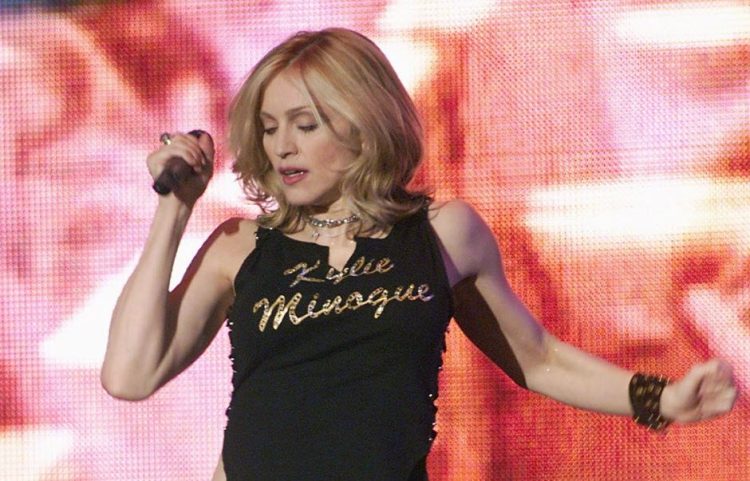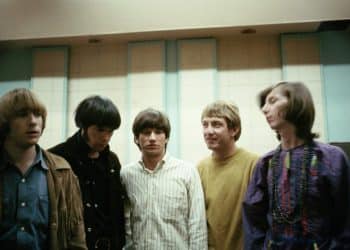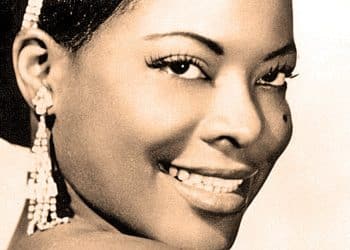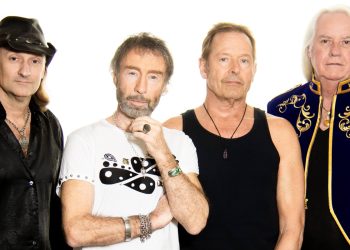Madonna, the undisputed Queen of Pop, has been captivating audiences for decades with her electrifying performances, provocative artistry, and anthems that have defined generations. From her early days as a boundary-breaking icon in the 1980s to her ever-evolving presence in the music industry, Madonna’s influence is nothing short of legendary. With a career spanning over four decades, she has delivered a treasure trove of unforgettable hits that have topped global charts, dominated dance floors, and resonated with fans across the world.
In this article, we take a journey through the musical legacy of Madonna by counting down her top 10 most popular songs of all time. These are the tracks that transcended the airwaves and cemented her status as a cultural phenomenon. From empowering ballads to pulsating dance anthems, each song on this list showcases Madonna’s unparalleled ability to reinvent herself while staying true to her artistry. Whether you’re a lifelong fan or a new listener discovering her brilliance for the first time, these iconic hits will remind you why Madonna remains a force to be reckoned with. So, let’s dive into the magic and celebrate the songs that made Madonna the queen of our hearts and playlists!
1. Like a Virgin (1984)
“Like a Virgin” was the song that transformed Madonna from a rising pop star into a global icon. Released in 1984 as the title track of her second studio album, the song was an instant sensation, topping the Billboard Hot 100 and solidifying her status as a trendsetter in pop music. With its bouncy bassline, infectious melody, and provocative lyrics, “Like a Virgin” played with themes of reinvention, innocence, and sexuality in a way that was both playful and rebellious.
Produced by Nile Rodgers, the track’s polished yet daring sound was a perfect match for Madonna’s bold persona. The song’s impact was further amplified by its unforgettable music video, in which she danced through the canals of Venice in a white wedding dress, blurring the line between purity and seduction. Critics and audiences were captivated by her ability to mix controversy with charm, a balance that would become a hallmark of her career.
Beyond its chart-topping success, “Like a Virgin” became a cultural milestone. It was both an anthem of empowerment and a defining moment for the decade’s pop scene. Even today, the song remains one of Madonna’s most recognizable and celebrated hits, proving that reinvention is the key to longevity in music.
2. Vogue (1990)
“Vogue” wasn’t just a song—it was a movement. Released in 1990, this dance anthem took inspiration from the underground ballroom culture of New York City, where voguing, an expressive dance style inspired by fashion model poses, had been thriving for years. With its pulsating house beat and glamorous aesthetic, “Vogue” catapulted this subculture into the mainstream, introducing a global audience to a world of self-expression and artistry.
Included on her I’m Breathless album, the song was originally intended as a B-side but quickly took on a life of its own. Madonna’s sultry vocals and the song’s hypnotic production, courtesy of Shep Pettibone, made it an instant club hit. The lyrics encouraged listeners to “strike a pose” and embrace confidence, with name-drops of Hollywood legends adding a sense of timeless glamour.
The iconic black-and-white music video, directed by David Fincher, cemented the song’s legendary status. Featuring stunning choreography and high-fashion aesthetics, it paid homage to the golden age of cinema while showcasing voguing as a legitimate dance form. “Vogue” reached No. 1 in over 30 countries and remains one of Madonna’s most enduring and culturally significant tracks.
3. Material Girl (1984)
“Material Girl” became one of Madonna’s most iconic songs, not just for its catchy melody but for the persona it helped create. Released in 1984 as part of her Like a Virgin album, the song’s upbeat production and playful lyrics painted a picture of a woman who prioritizes wealth and luxury in love. With its infectious energy and tongue-in-cheek delivery, the track quickly became a fan favorite, reaching the top of the charts and further establishing Madonna as the era’s biggest pop star.
Written by Peter Brown and Robert Rans, “Material Girl” was a satirical take on materialism and consumer culture, themes that were highly relevant in the 1980s. However, it was the song’s music video that made an even bigger impact. Inspired by Marilyn Monroe’s performance of “Diamonds Are a Girl’s Best Friend” from Gentlemen Prefer Blondes, Madonna recreated Monroe’s glamorous aesthetic, complete with pink gowns, dazzling jewelry, and a troop of adoring male suitors. The video solidified Madonna’s ability to blend music, film, and fashion into a singular pop culture moment.
Despite the song’s playful nature, Madonna later expressed frustration with how “Material Girl” led to her being labeled as such. However, its impact on pop music and its role in defining her early career is undeniable. Even decades later, the song remains an essential part of Madonna’s legacy and a defining track of the 1980s.
4. Like a Prayer (1989)
“Like a Prayer” marked a turning point in Madonna’s career, showcasing her ability to blend pop music with deep, personal themes. Released in 1989 as the lead single from her album of the same name, the song explored love, faith, and redemption in a way that was both deeply personal and universally relatable. Featuring a gospel choir, soaring melodies, and emotionally charged lyrics, it was unlike anything Madonna had done before.
The song’s lyrics play with dual meanings, intertwining religious imagery with themes of romantic and spiritual devotion. Lines like “I’m down on my knees, I want to take you there” blurred the line between sacred and sensual, challenging listeners’ perceptions. Musically, the track’s fusion of gospel and pop was groundbreaking, adding an emotional depth that resonated with audiences worldwide.
However, it was the song’s controversial music video that truly ignited a firestorm. Featuring burning crosses, a Black saint-like figure, and Madonna receiving stigmata, the visuals sparked outrage, particularly from religious groups and the Vatican. The backlash led to Pepsi pulling a major endorsement deal with Madonna, but the controversy only fueled the song’s success.
Despite the uproar, “Like a Prayer” was widely praised by critics and fans alike. It became one of Madonna’s most defining songs, not only for its powerful sound but for its willingness to push artistic and cultural boundaries.
5. Into the Groove (1985)
Few songs capture the essence of 1980s dance culture like “Into the Groove.” Released in 1985 as part of the Desperately Seeking Susan soundtrack, the song became a defining anthem of the decade, blending infectious beats with Madonna’s signature playful energy. Its pulsating rhythm and celebratory lyrics made it an instant favorite on dance floors worldwide.
Lyrically, “Into the Groove” is an invitation to let go and lose yourself in the music. Lines like “Music can be such a revelation” and “Only when I’m dancing can I feel this free” capture the euphoric escapism that dancing provides. The song’s hypnotic bassline and layered synths made it irresistible, while Madonna’s carefree vocal delivery added to its charm.
Though it was never officially released as a single in the U.S., the song’s popularity skyrocketed thanks to its association with Desperately Seeking Susan, in which Madonna starred. In the UK and other markets, “Into the Groove” became a chart-topping hit, further solidifying Madonna’s dominance in pop music.
The track remains one of her most beloved songs, frequently appearing in her live performances and greatest hits collections. It’s a reminder of Madonna’s unique ability to create music that not only defines an era but continues to inspire generations of fans.
6. La Isla Bonita (1987)
“La Isla Bonita” was a departure from Madonna’s usual pop sound, embracing Latin influences that would later become a significant part of her musical evolution. Released in 1987 as the fifth single from her True Blue album, the song introduced audiences to a dreamlike vision of a tropical paradise filled with romance, nostalgia, and longing. With its Spanish guitar, rhythmic percussion, and warm melodies, “La Isla Bonita” transported listeners to an idyllic island where love and beauty reigned.
The lyrics tell the story of someone reminiscing about the magical moments spent in a place called San Pedro, where passion and serenity coexist. Madonna’s gentle, almost wistful vocal delivery adds to the song’s charm, making it one of her most heartfelt performances. She even sings part of the song in Spanish, adding authenticity to its Latin-inspired sound.
“La Isla Bonita” was a massive success, topping the charts in multiple countries and becoming one of Madonna’s signature songs. It also marked the beginning of her fascination with Latin music and culture, which she would later explore further in hits like “Who’s That Girl” and “Spanish Lesson.” The song’s popularity remains strong, frequently featured in her concerts, proving its status as a timeless classic.
7. Hung Up (2005)
“Hung Up” was the song that proved Madonna could still dominate the charts decades into her career. Released in 2005 as the lead single from her Confessions on a Dance Floor album, the track was a bold return to her club roots, featuring a heavy dance beat and an unforgettable hook. Built around a sample of ABBA’s “Gimme! Gimme! Gimme! (A Man After Midnight),” “Hung Up” fused disco, house, and electronic elements into an irresistible dance anthem.
The lyrics convey the frustration and anticipation of waiting for a lover who may never come around. Madonna’s delivery is both confident and urgent, capturing the tension between desire and disappointment. The pounding beat and pulsating synths make it impossible to sit still, which is why it became a global club hit.
“Hung Up” was a massive success, topping the charts in over 40 countries and breaking records for its commercial performance. It was praised for its flawless production and Madonna’s ability to reinvent herself while staying true to her pop sensibilities. The song remains one of her most celebrated hits, proving that she could continue to shape the sound of dance music well into the 21st century.
8. Papa Don’t Preach (1986)
With “Papa Don’t Preach,” Madonna showed the world that she was more than just a pop star—she was a storyteller unafraid to tackle complex themes. Released in 1986 as part of her True Blue album, the song took on the controversial topic of teenage pregnancy, portraying a young woman who stands up to her father’s disapproval as she chooses to keep her baby. The song’s dramatic string introduction and powerful melody gave it a cinematic quality that set it apart from her earlier hits.
Lyrically, “Papa Don’t Preach” is both a personal plea and a declaration of independence. Madonna’s voice carries the weight of the protagonist’s struggle, making the song deeply emotional yet empowering. While some listeners saw it as a pro-life statement, others interpreted it as a feminist anthem about a woman taking control of her own choices. Regardless of interpretation, the song sparked conversations and cemented Madonna’s reputation for pushing boundaries.
“Papa Don’t Preach” became a chart-topping hit, earning critical acclaim for its bold storytelling and sophisticated production. It remains one of Madonna’s most compelling songs, demonstrating her ability to create music that resonates on both a personal and societal level.
9. Holiday (1983)
“Holiday” was the song that launched Madonna into stardom. Released in 1983 as a single from her debut album, it was her first major hit, introducing the world to her infectious energy and knack for creating dancefloor anthems. The song’s upbeat melody, shimmering synths, and joyous lyrics made it the perfect feel-good track, encouraging listeners to forget their troubles and celebrate life.
The lyrics are simple but effective: “If we took a holiday, took some time to celebrate / Just one day out of life, it would be so nice.” Madonna’s spirited delivery adds to the song’s uplifting vibe, making it an instant favorite in clubs and on radio stations. The track’s production, handled by John “Jellybean” Benitez, gave it a polished yet fresh sound that perfectly matched the rising dance-pop movement of the early ’80s.
“Holiday” became a defining song of the decade, solidifying Madonna’s place as a pop powerhouse. It remains a staple of her live performances, often serving as a celebratory moment in her concerts. Decades later, the song’s message of joy and escape still resonates, making it one of the most enduring anthems of her career.
10. Frozen (1998)
“Frozen” was a game-changer for Madonna, marking a dramatic shift in her sound and image. Released in 1998 as the lead single from her Ray of Light album, the song embraced a darker, more ethereal aesthetic, combining electronic beats with orchestral arrangements. The result was a hauntingly beautiful ballad that showcased a more introspective and mature Madonna.
The song’s lyrics explore themes of emotional detachment and longing. “You only see what your eyes want to see / How can life be what you want it to be?” she sings, addressing a lover—or perhaps even herself—who is closed off to love and transformation. The melancholic strings and atmospheric production, handled by William Orbit, added a sense of vastness, making the song feel both intimate and otherworldly.
“Frozen” was met with widespread acclaim, praised for its sophisticated sound and Madonna’s haunting vocal performance. It became a global hit, topping charts in multiple countries and earning recognition as one of her most artistically daring releases. The accompanying music video, featuring Madonna as a mysterious, shape-shifting figure in a desert landscape, further added to the song’s mystique.
More than two decades later, “Frozen” remains a fan favorite, a testament to Madonna’s ability to continuously reinvent herself while maintaining a deep emotional connection with her audience.









